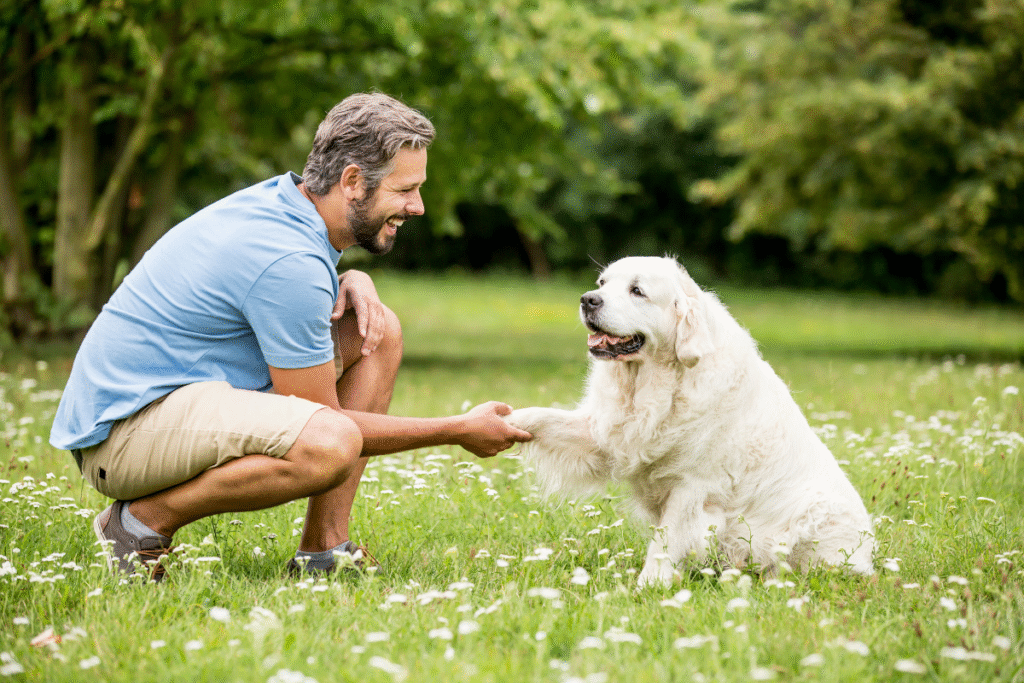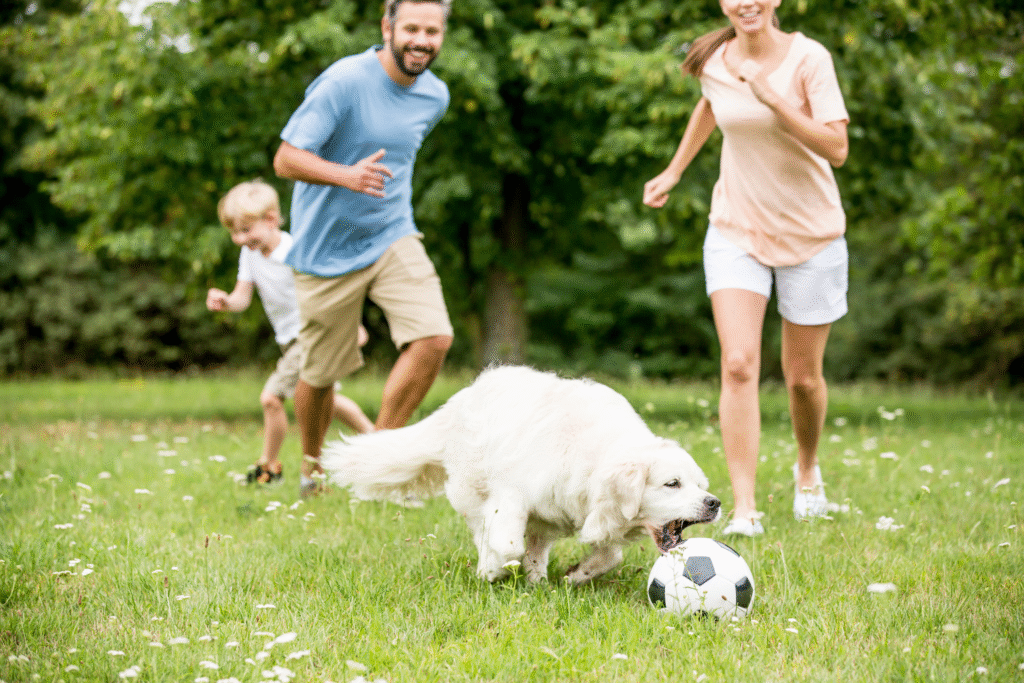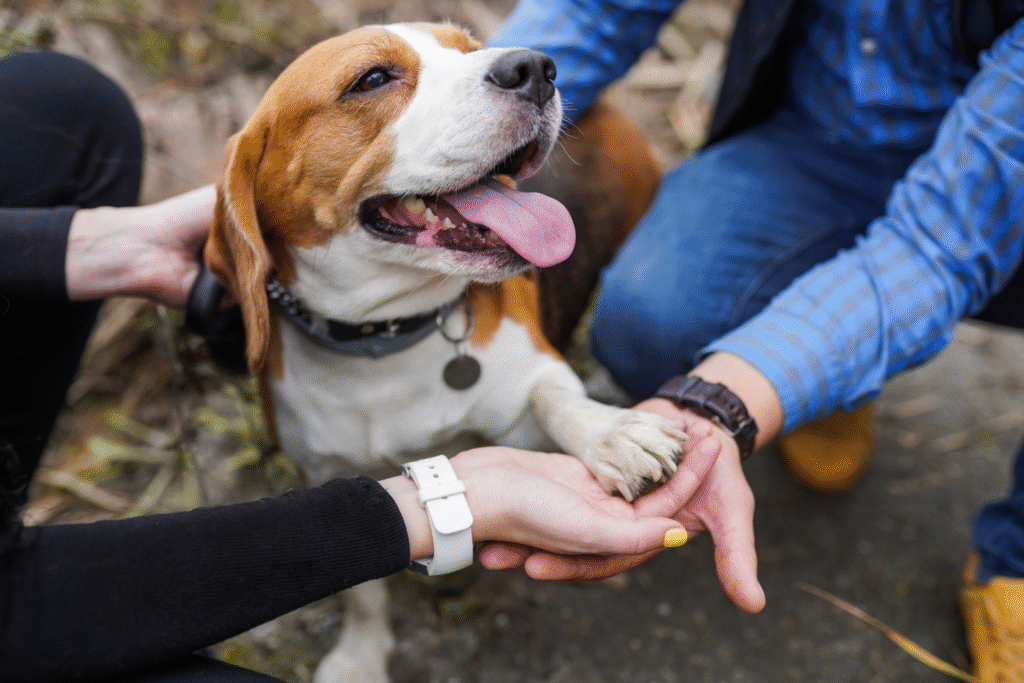Science and daily life keep showing us that dogs grasp more than we imagine.

Ask any dog owner, and they’ll swear their dog gets them on some level. It’s not just the way tails wag at certain words, but how dogs tilt their heads, follow tone, and seem to anticipate actions before they’re spoken. Researchers have been studying these moments, and what they’re finding adds depth to what people already sense.
Dogs may not understand us like humans do, but they decode our cues with remarkable accuracy. From words to gestures to emotions, their comprehension reveals itself in everyday ways that are impossible to ignore once you start paying attention.
1. Dogs can recognize dozens of human words.

Scientists have documented that dogs are capable of learning vocabulary far beyond the basics of “sit” and “stay,” according to a study published in the journal Science. Some dogs can understand hundreds of words, while most at least grasp a handful of core terms tied to daily life. The difference is that they link words directly to outcomes—walk, treat, or ball—rather than abstract meaning.
For owners, this creates moments of uncanny understanding. Say “outside” in a casual sentence, and suddenly paws are at the door. The ability is less about grammar and more about association, but it proves that dogs are tuned into our language in practical ways that shape how we live together.
2. Tone often matters more than the actual word.

Researchers studying canine cognition found that dogs interpret emotional tone even when they don’t understand every word, as reported by NPR. When an owner speaks in a cheerful voice, dogs respond with excitement. A stern tone, even without recognizable words, signals a different reaction altogether.
This reliance on tone explains why some dogs seem to “know” when they’re in trouble before a command is even finished. They read the energy behind our voices as much as the language itself. It’s not always what you say—it’s how you say it.
3. Dogs can follow human gestures with surprising accuracy.

A classic experiment revealed that when a person points, most dogs instinctively follow the gesture, as discovered by researchers at the University of Vienna. Unlike many animals, dogs treat pointing as meaningful, looking where the hand directs instead of staring at the finger.
This ability makes daily life smoother. Point toward the leash, and your dog is already anticipating the walk. Gesture at the couch, and suddenly they’re curling up where you indicated. It’s a subtle but powerful way that human-dog communication has evolved over thousands of years.
4. Eye contact communicates more than we realize.

When a dog holds your gaze, oxytocin levels rise in both human and animal, strengthening the bond. This hormonal feedback loop mirrors the way parents and infants connect, creating a shared emotional signal between species. Eye contact isn’t just accidental—it’s a tool dogs use to connect and reassure.
Owners often feel that their dogs “look into their soul,” and science suggests there’s more truth than fantasy in that sensation. Those long stares build a silent language, one rooted in trust and attachment rather than vocabulary.
5. Dogs interpret our routines like clockwork.

Most owners don’t need to announce dinner time. Dogs already know by the sound of a cabinet, the jingle of keys, or the shift of shoes on the floor. Routines build their sense of prediction, turning everyday actions into cues.
This skill gives the illusion that dogs understand schedules in human terms, when in reality they’re piecing together patterns with precision. Their timing may feel uncanny, but it’s built from keen observation over days, weeks, and years of living alongside us.
6. Emotional cues rarely go unnoticed.

Dogs have been shown to recognize human emotions through facial expressions, body posture, and even scent. Happiness, sadness, and anger each trigger different responses, and dogs often adapt their behavior accordingly.
A crying owner might find their pet pressed up against them, while frustration may cause avoidance. This responsiveness blurs the line between empathy and conditioned reaction, but for those experiencing it, the difference hardly matters. It feels like emotional understanding, and that’s enough to strengthen the bond.
7. Some dogs can detect words in different contexts.

When a dog hears “ball” in a playful tone during fetch versus in a casual conversation, the reaction often differs. This suggests they don’t just memorize sounds but attach meaning tied to setting and delivery.
This flexibility makes them skilled communicators in homes where the same word might be used differently. It’s not a perfect system, but it shows adaptability that exceeds simple training. Dogs are constantly updating what words mean based on how they’re used.
8. Body language gives away far more than we think.

Before a word is spoken, dogs are already watching posture, pace, and gestures. Standing up quickly, grabbing a bag, or even sighing heavily each sends signals. Dogs process these physical hints with speed, often reacting before an owner has even decided on the next move.
Living with a dog becomes an exercise in unspoken conversation. The less humans notice their own signals, the more impressive a dog’s perception seems. In reality, they’re simply experts in silent details.
9. Shared play builds a deeper vocabulary.

Games like fetch, hide-and-seek, or agility training expand the words and cues dogs recognize. Through repetition and fun, they learn terms tied to movement, direction, and even objects. Play isn’t just entertainment—it’s language practice.
Each playful interaction strengthens the link between words and actions, giving dogs a growing dictionary that extends far beyond commands. Over time, a playful household becomes a bilingual environment of gestures, tones, and phrases dogs can reliably decode.
10. Scent adds a hidden layer of communication.

Beyond words and gestures, scent provides context. Dogs can smell stress hormones, illness, and even subtle chemical changes in human bodies. This sensory input shapes how they respond to spoken cues, adding a layer of understanding invisible to us.
A person might insist they’re fine, but a dog sniffing out cortisol tells another story. That awareness complicates the idea of verbal communication, proving dogs operate on multiple sensory channels simultaneously.
11. Anticipation makes communication feel seamless.

Because dogs are masters of prediction, they often act like they understood a sentence before it was finished. In truth, they’re piecing together fragments of tone, movement, and prior experience into a quick guess that usually proves accurate.
This predictive ability gives the illusion of fluent understanding. Owners may be convinced their pet knows entire sentences, when in reality the dog is just filling in blanks faster than expected. It’s not magic—it’s learned efficiency.
12. Dogs make communication a two-way street.

Perhaps the most telling sign of understanding is how dogs respond back. They don’t just listen; they initiate. Nudges, barks, and paw taps all serve as signals meant to guide humans. Owners often describe this as “being told” something by their pet, and in many ways, it is.
The relationship becomes conversational not because dogs know words but because they’ve mastered a cycle of signaling and response. That mutual rhythm is what makes living with them feel like a partnership rather than ownership.
